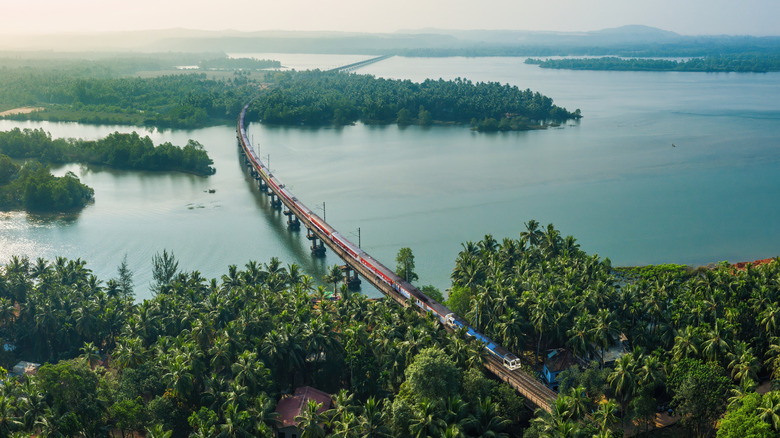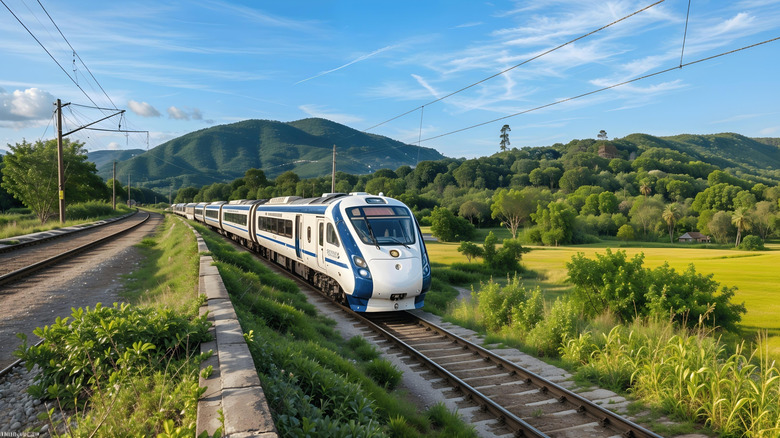
Train travel is one of the best ways to see the world. It's quick, it's affordable, and it's one of the most eco-friendly transportation options. So, it's no surprise that more and more countries are embracing rail travel as a cleaner, smarter alternative to flying or driving. And in big rail travel news, India, a country famous for its long, scenic rail routes, has announced it will achieve 100% electrification of its railway lines this year.
A project a century in the making, India has taken major
steps toward sustainability by electrifying much of its railway system, with around 97% of its lines already upgraded. Electrifying railways cuts pollution, lowers carbon emissions, and uses energy more efficiently, making this a huge milestone in lowering India's overall emissions. To put India's achievement into perspective, the only country that has achieved such a goal is Switzerland, which already has a 100% electric railway, a project that took several decades. The country also has Europe's most scenic train journeys, according to Rick Steves. On the other hand, the U.K. has managed to convert 37% of its railways, and America has only converted around 1%. This puts India in rare company, considering its railway system is nearly 17 times larger than Switzerland's in terms of track length (based on 2021 figures).
India's first electric train took to the tracks 100 years ago. It ran between two Mumbai train stations about 15 miles apart, and was the start of a century's worth of innovation for the country's railway system. The current electrification project will also include trains like the luxury Deccan Odyssey, which is one of the top 10 most luxurious trains, not just in India but in the whole world. This famous line is currently in the works of transitioning to electric.
Read more: Rick Steves Says To Always Do These Things Before Traveling
The Carbon Footprint Effect Of India's Electric Trains

24 million people take trains every day in India, so this change will have huge effects on the country's digital footprint. Indian Railways, already one of the world's largest transport networks, is now leading the charge toward green change. The electrification project is expected to prevent the emission of millions of tonnes of CO₂ each year.
On top of this, Indian Railways is also installing solar panels at stations, and even on some trains. This is another big step toward making the entire network not just electric, but sustainably powered -- a big plus for mindful travelers, especially given how scenic Indian train journeys can be. And while trains are often slower than flying, there are exceptions like the Gatimaan Express, which runs between Delhi and Agra in just 100 minutes, perfect for those hoping to see the Taj Mahal in one day, without the extra hassle of airport queues.
India's railways span over 42,000 miles, connecting people in huge, bustling cities, like India's "Venice of the East," to more rural towns and villages. This development of fully electric lines won't only help Indian Railways reach its net zero target, but also reduce both air and noise pollution for those living in close proximity to the railways. With such a huge population relying on this network every day, India's move to full electrification marks a huge step towards sustainable transport. If you are interested in sustainable travel, make sure to also check out these eco-friendly hotel tips.
Ready to discover more hidden gems and expert travel tips? Subscribe to our free newsletter for access to the world's best-kept travel secrets.
Read the original article on Islands.











